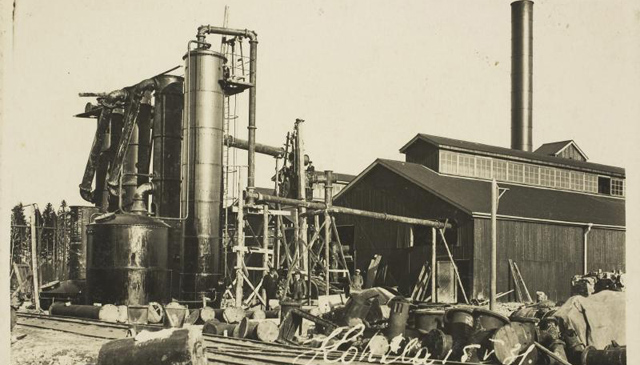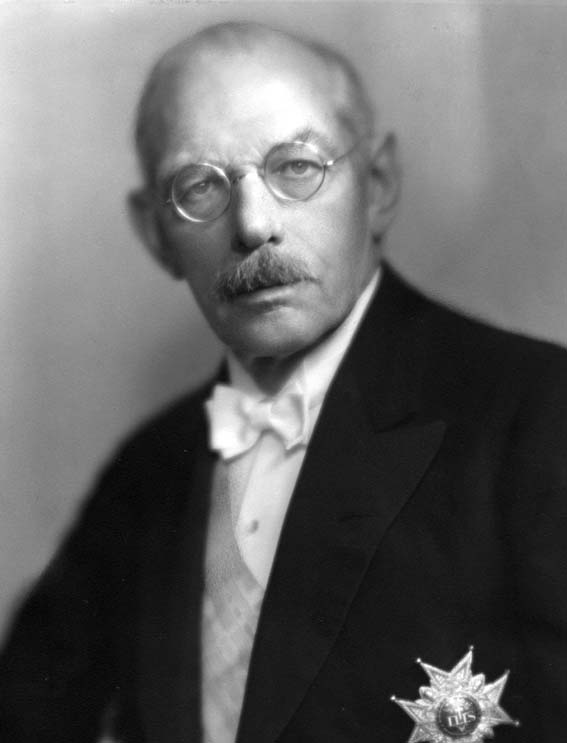The history of the Banque de Paris et des Pays-Bas in the Baltic countries – an aborted attempt (2/2)

In the early 1920s, the Banque de Paris et des Pays-Bas had a minimal presence in the Baltic States. In subsequent years, however, various projects were considered in Lithuania, Latvia and Estonia. Only one concrete project emerged from these hesitant attempts: the development of a Norsk Hydro subsidiary in Estonia to exploit the country’s shale oil reserves.
The Baltic States in the inter-war period
Times were turbulent in the Baltic countries during the interwar period. International tensions remained high and governments and companies resulting from independence, gained in 1921, experienced a shift towards authoritarianism. At the turn of the 1920s and 1930s, a series of coups brought conservative and nationalist dictatorships to power.
These regimes were fiercely anti-communist. Communist parties were banned and their members targeted by repression. The Baltic States found themselves at the meeting point of the capitalist and communist worlds and were part of the “cordon sanitaire” around the Soviet Union, as envisaged by Anglo-French leaders, acting as the buffer between the two ideologies.

The Baltic economies remained largely rural throughout their period of independence before the Second World War. In all three states, agriculture remained the largest sector of the economy throughout the interwar period and industry only employed between 5% and 20% of their population. Two countries absorbed most of the Baltic agricultural production: Germany and England.
Baltic societies were poor, politically unstable and closely linked to France’s European rivals, all factors that discouraged the intervention of the Banque de Paris et des Pays-Bas (Paribas), despite a strategy of advancement into Eastern Europe which had led to it gaining a foothold in several countries. During the 1920s and until the early 1930s, however, the bank received various proposals from external players concerning the Baltic States.
Fruitless projects
Correspondence in the BNP Paribas Archives contains a large number of miscellaneous letters concerning various projects linked to Lithuania, Latvia and Estonia. In 1920, the representative in France of the Union of Latvian Cooperatives (Konzums), called Stabusch, presented a large-scale project in three parts: the establishment of a major bank to finance trade and industry, trade in French goods for Konzums’ Latvian goods, and purchase of industrial equipment in France, in exchange for the delivery of 150 million francs of timber from the Latvian State.
As well as the precise details of these projects, this letter dated 6 May 1920 is interesting for its explicit political language. Stabusch writes very directly about the international issues underlying these economic questions: Latvians need to turn to France to counterbalance the economic weight of Germany and Britain. This project is also reminiscent of the three-part contract signed by Latvia with the British group Fortington. However, yet again the bank refused to take steps to compete with British banks and companies.
In the bank’s correspondence, projects relating to the Baltic States are almost systematically rejected. Examining them individually reveals a standard scenario. An agent from the French Office of Trade, a French or local entrepreneur or intermediary, or even the government of one of the three Baltic States, sends a proposal to the bank. The bank’s teams respond in turn with a polite but firm rejection.
Estonia is a good example. From a 1924 hydroelectric power plant project on Lake Peipus, near the city of Narva, to a project to build a port and a railway line on the island of Oesel, and major development work for the city of Reval (Tallinn) in 1922 – whatever the project, Paribas fails to take it on. But looking more specifically at Estonia is interesting in more ways than one, for this was the only country to host a successful project involving Paribas in the Baltic States during the interwar period.

Shale oil in Estonia
Estonia has significant shale oil reserves and these were beginning to be exploited in the interwar period. This fossil resource (not to be confused with shale gas) is an energy source from which petrol can be extracted. “Burning rock” (as shale oil is called in Estonian) is used not only to produce petrol, but also to supply power plants and as a fuel for heating. This mineral resource was obviously crucial for a small country like Estonia, largely rural and seeking to develop, following the nationalist model of self-sufficiency promoted by the authoritarian regime of President Konstantin Päts.
Production, which began during the First World War, took off in the interwar period: from 16 tonnes extracted in 1918, it increased to more than 1.8 million tonnes in 1940. The first player to be involved in the shale extraction and processing sector was the Estonian State, represented by the department of the State shale oil industry within the Industry Ministry.
But foreign private players very quickly became interested in this booming industry. In 1922, Eesti Kiviöli was founded with financing from a German bank, Mendelssohn & Co, and a German-Baltic bank, G. Scheel & Co. By the end of the 1930s, this company had become the leading producer of shale oil in Estonia. The sector also attracted British investors, who founded the Estonian Oil Development Syndicate Ltd in 1924, followed bythe mining company Consolidated Gold Fields, which opened an Estonian branch in 1931.

Norsk Hydro projects
Paribas’s interest in shale oil was growing indirectly via an intermediary, the Norwegian Nitrogen Company, otherwise known as Norsk Hydro. In 1926, this company – in which the bank was represented at Board level – formed a Swedish-Norwegian consortium with two other Swedish companies. But the real leader of the project, with control over management of the consortium, was Marcus Wallenberg, the Swedish founder of Norsk Hydro. This led to the creation of Eestima Ölikinsortsium, or Estländska Oljeskifferkonout in Swedish – the Estonian Oil Consortium.
The Norwegian Nitrogen Company contributed 950,000 Swedish krona to the creation of the consortium in 1926, out of a total capital of 1,900,000 krona. This made it possible to buy a shale oil concession in Estonia and build and commission a shale processing plant in the village of Sillamäe. The budget was soon weighed down by unexpected costs however. Contrary to forecasts, commissioning of the plant used up all of the initial capital and the shale used was not derived from the consortium’s concession, which remained untapped, but was instead purchased from the Estonian state. Annual production costs then rose to 975,000 krona, while projected production stood at just 500,000 krona.
The high cost of this production and the successive capital increases needed to cover the Estonian consortium’s expenses had a major impact on the company’s operational ability. The Great Depression struck Estländska Oljeskifferkon hard. As demand for shale oil fell, the cost of purchasing the raw material from the Estonian state became too great for the company.
The Estonian plant therefore closed its doors in 1930, ceasing all production until 1935. The situation then appeared so desperate that correspondence between Wallenberg, Axel Aubert (Chief Executive Officer of Norsk Hydro) and Louis Wibratte (Director of Paribas) discusses a plan to liquidate the Estonian syndicate and sell the plant and the concession.



The final years of the consortium
The plant started up again in the middle of the decade, however, with the recovery in output driven by export growth. The Estonian shale sector, which survived the gloomy period of the early 1930s thanks to the strength of the Estonian domestic market, was turning to fuel exports, as bilateral agreements were signed with Finland and Latvia to export diesel from shale processing.
But the main beneficiary of the increase in Estonian exports was Germany, which needed Estonian fuel to meet the needs of the Kriegsmarine. Almost all shale oil companies traded with the country. Eesti Kiviöli from 1935, the Estonian state company the following year and, in 1938, the consortium supported by Norsk Hydro, which signed a contract with the German government to supply 9500 tonnes a year.
In 1940, the Baltic countries were occupied by the Red Army, then annexed by the USSR. Companies owned by foreign companies were then nationalised by the Soviet State, including the Estonian shale consortium. The history of this company is a good example of Paribas’s relationship with the Baltic States. Its involvement there was always peripheral. Its involvement in this case was real, but only came via its links with Norsk Hydro. Even this company soon withdrew and all production ceased between 1930 and 1935. A long way from France and neglected by the bank, the Baltic States fell into its rivals’ orbit during the interwar period.








